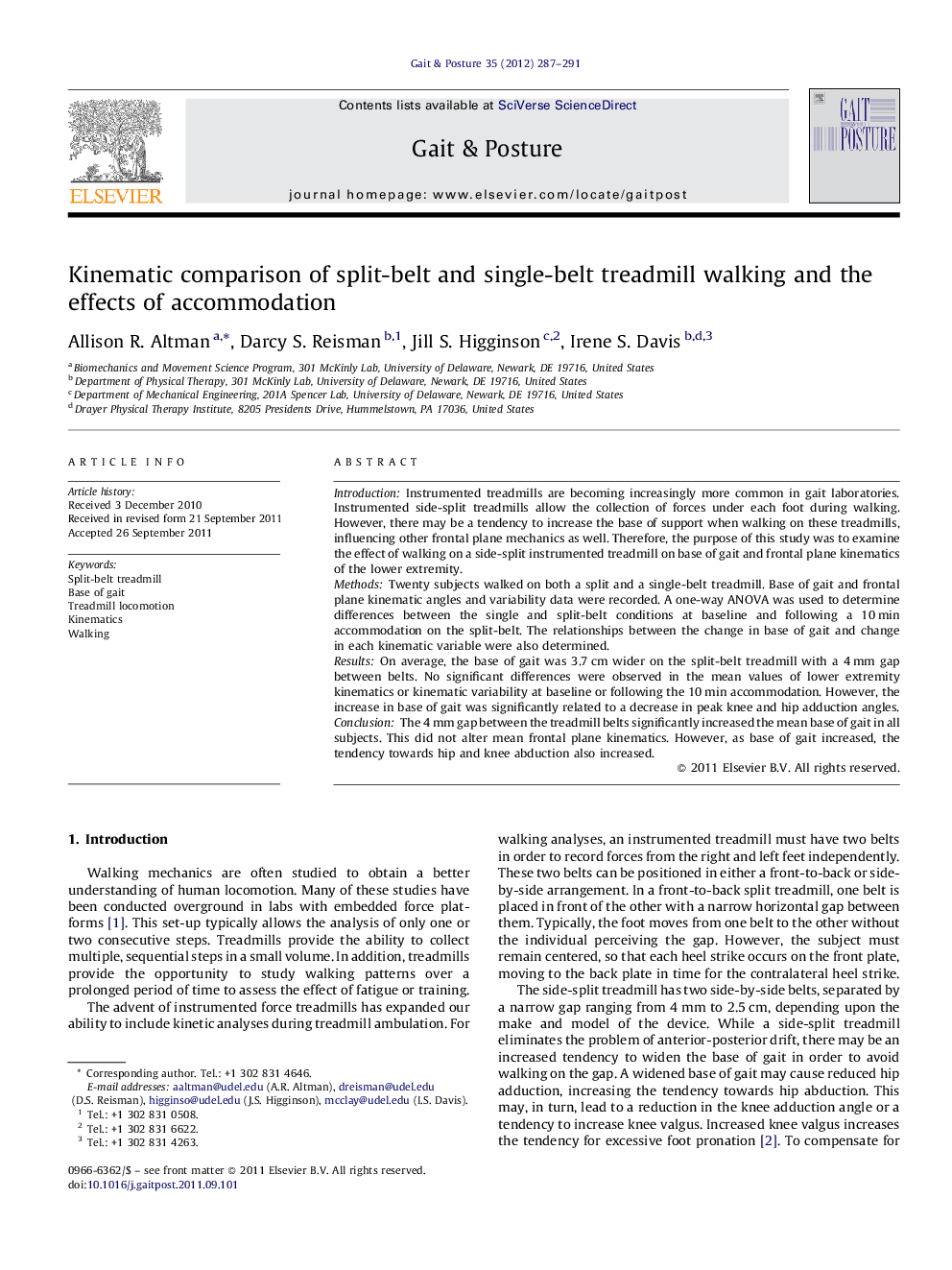| Article ID | Journal | Published Year | Pages | File Type |
|---|---|---|---|---|
| 6208138 | Gait & Posture | 2012 | 5 Pages |
IntroductionInstrumented treadmills are becoming increasingly more common in gait laboratories. Instrumented side-split treadmills allow the collection of forces under each foot during walking. However, there may be a tendency to increase the base of support when walking on these treadmills, influencing other frontal plane mechanics as well. Therefore, the purpose of this study was to examine the effect of walking on a side-split instrumented treadmill on base of gait and frontal plane kinematics of the lower extremity.MethodsTwenty subjects walked on both a split and a single-belt treadmill. Base of gait and frontal plane kinematic angles and variability data were recorded. A one-way ANOVA was used to determine differences between the single and split-belt conditions at baseline and following a 10Â min accommodation on the split-belt. The relationships between the change in base of gait and change in each kinematic variable were also determined.ResultsOn average, the base of gait was 3.7Â cm wider on the split-belt treadmill with a 4Â mm gap between belts. No significant differences were observed in the mean values of lower extremity kinematics or kinematic variability at baseline or following the 10Â min accommodation. However, the increase in base of gait was significantly related to a decrease in peak knee and hip adduction angles.ConclusionThe 4Â mm gap between the treadmill belts significantly increased the mean base of gait in all subjects. This did not alter mean frontal plane kinematics. However, as base of gait increased, the tendency towards hip and knee abduction also increased.
